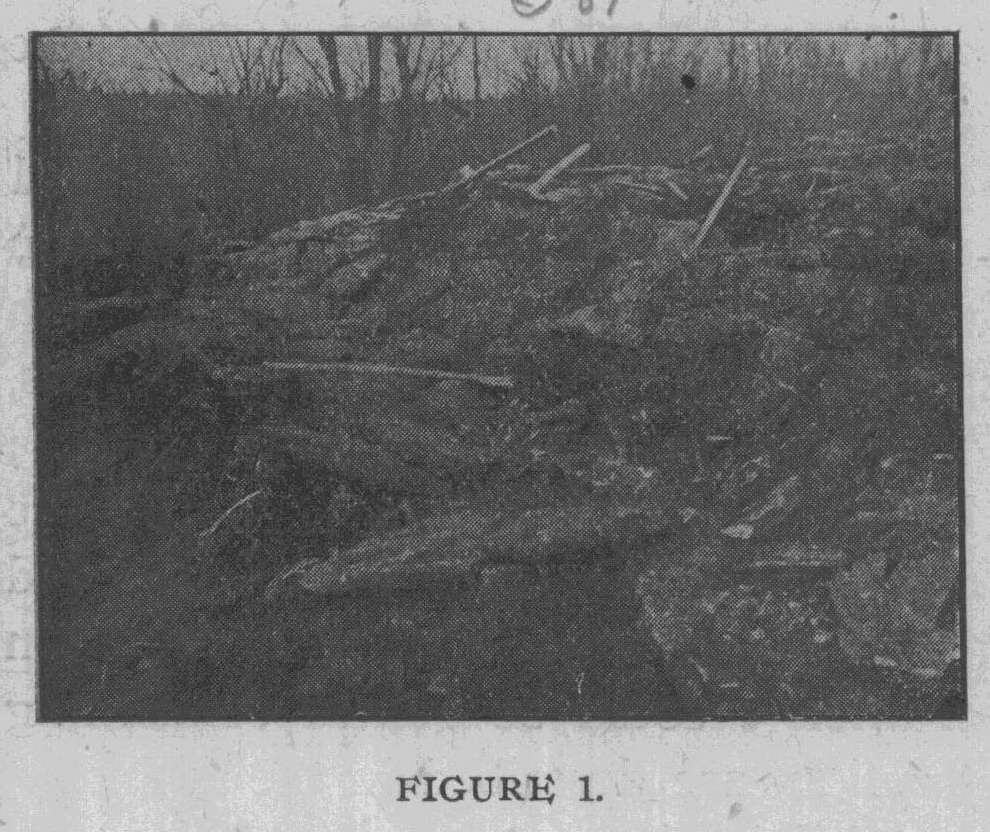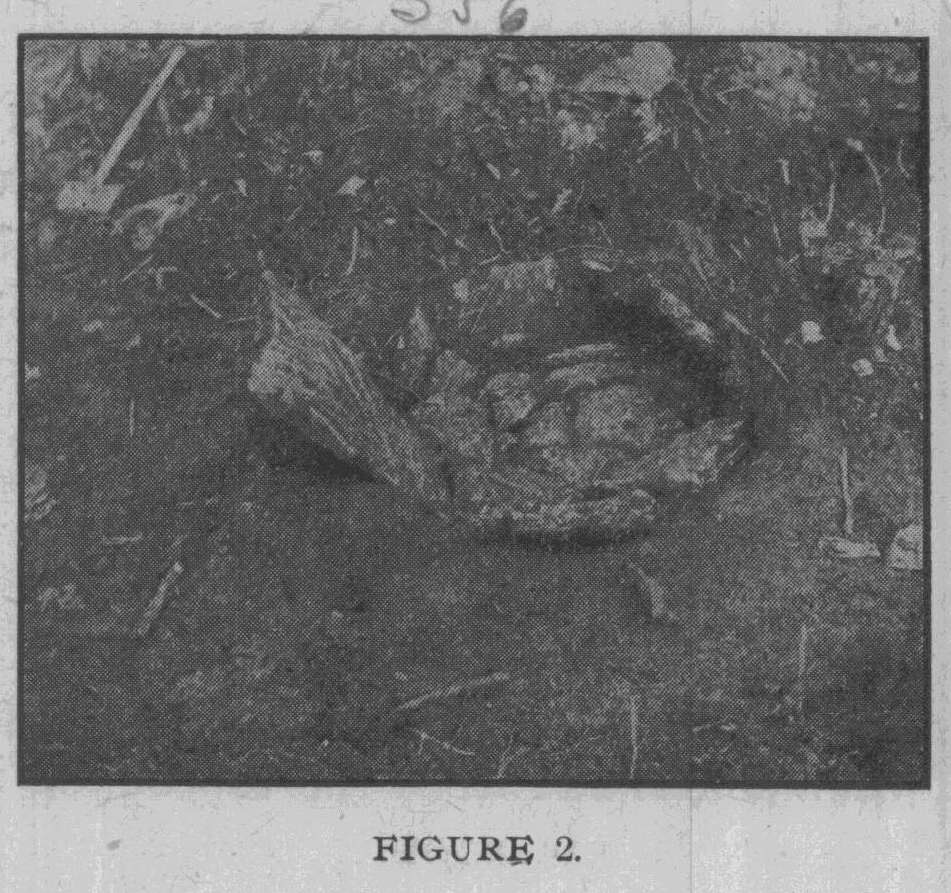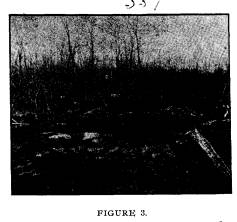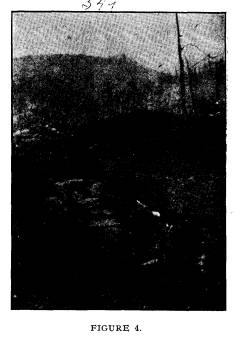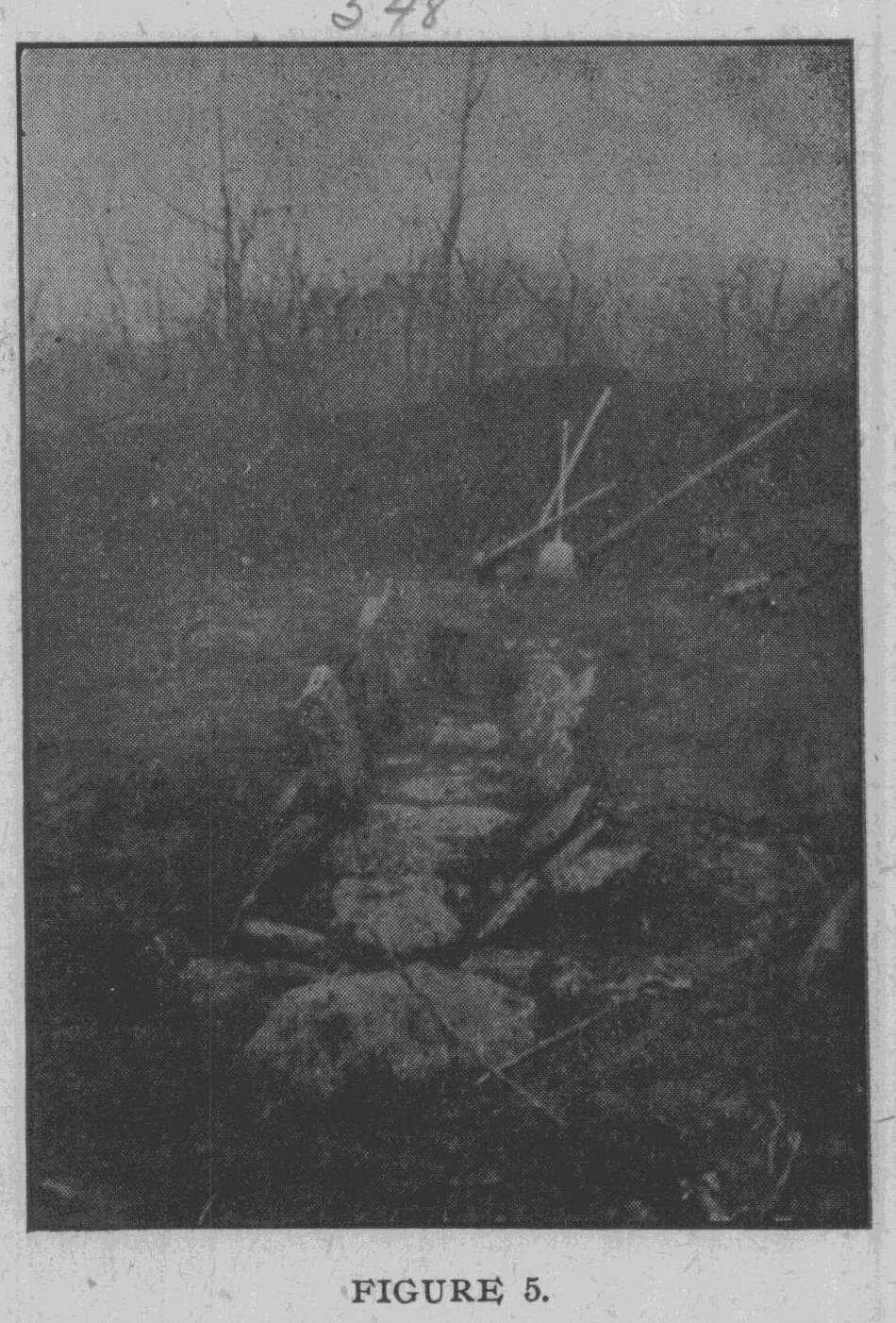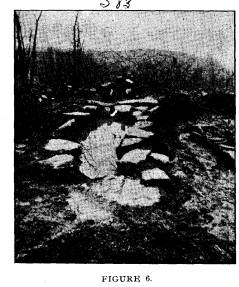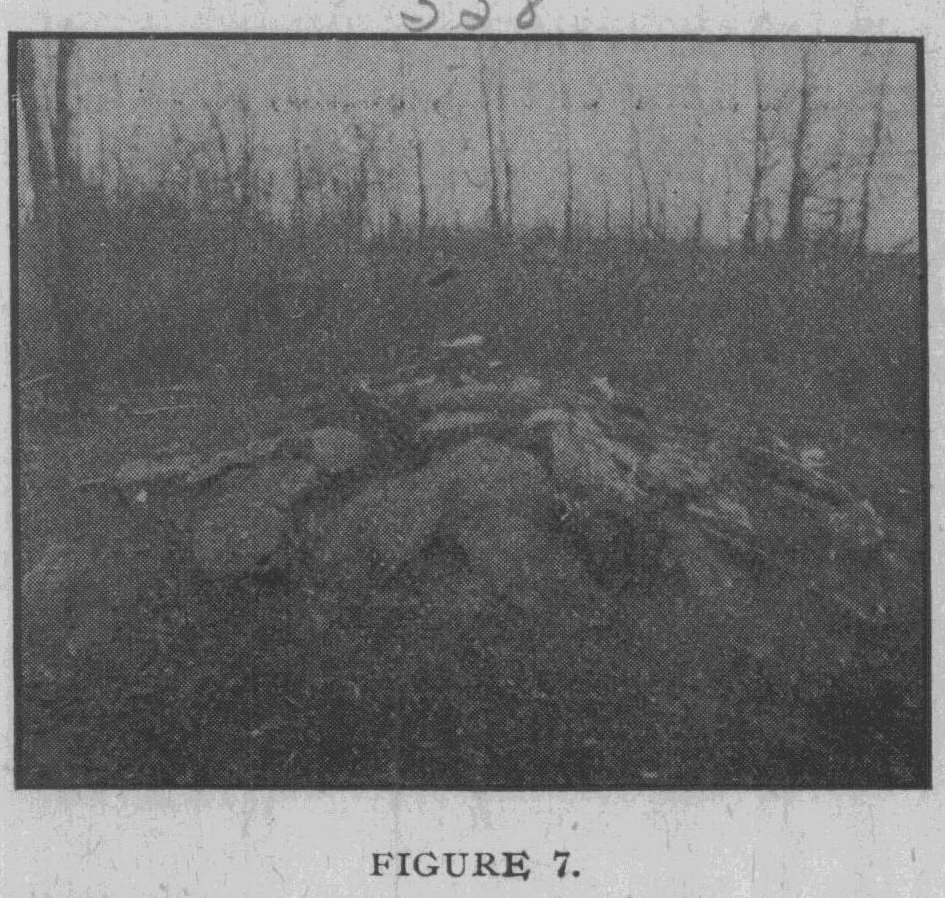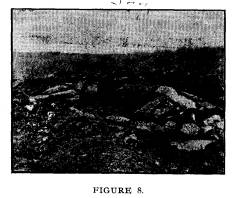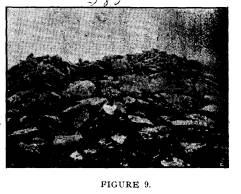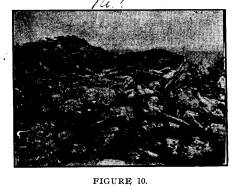Ohio History Journal
- 1
- 2
- 3
- 4
- 5
- 6
- 7
- 8
- 9
- 10
- 11
- 12
STONE GRAVES IN BROWN COUNTY, OHIO.
BY GERARD FOWKE.
On both sides of the Ohio river, from
Manchester, Ohio,
to Dover, Kentucky, a distance of
twenty-five miles, were for-
merly many stone graves or cairns. A few stood at varying
intervals for some miles below Dover,
and as far up the river as
Huntington, West Virginia; and some
remain along North Fork
of Licking river, in Mason county,
Kentucky. They were most
abundant from Manchester to Ripley on
the Ohio side of the
river, and from Maysville to Dover on
the Kentucky side. Be-
tween these points, almost every peak,
ridge, or high elevation,
commanding an extensive view of the Ohio
valley, was crowned
with at least one, and in many instances
several, of these cairns.
The smallest ones contained not more
than a wagon-load of
stones; the largest fully fifty times as
much. Between these
extremes was every intermediate size.
For nearly a century-ever since the
country was settled
by whites-desultory excavations have
been carried on in them
by people who imagine that Indians
concealed "gold" in all such
places. The peculiarities of structure
reported by these diggers,
have led various parties to attempt a
methodical investigation;
but after visiting many cairns only to
find them ravaged, the
quest has usually been abandoned. Three
or four which had
already been partially opened, but were
still in such condition
that tolerably accurate knowledge could
be gained concerning
the manner of their construction, are
described in the 12th An-
nual Report of the Bureau of Ethnology.
In the extreme southeastern corner of
Brown county, a
a few cairns had escaped the general
destruction. They owed
their immunity chiefly to trees growing
on them, whose roots
proved too formidable an obstacle to the idly curious
or the
seekers for hidden treasure. Five of
these were examined; in
each case all stones and earth
were entirely removed, down to the
yellow clay subsoil.
(193)
|
194 Ohio Arch. and His. Society Publications.
Two miles above Aberdeen, a narrow ridge extends directly south for about 500 feet from the rolling table land. Its top is horizontal; its sides slope steeply like the roof of a house, to a gorge on either side; the end falls precipitously to the river level.
CAIRN NUMBER ONE. The first cairn opened stood on this ridge, about 300 feet from its point. It was much the largest tumulus of this charac- ter yet discovered, measuring 34 feet from north to south, 37 feet from east to west, with its summit six feet above the southern margin. The surface on this side, however, is much lower than formerly, on account of careless cultivation. The structure had never been in any manner disturbed; relic hunters had looked upon it with longing eyes, but 27 trees grow- ing on its top had discouraged all efforts at excavation. A trench reaching to the subsoil was dug entirely around the mound, and carried inward until the imbedded rocks were |
|
|
|
top, was a grave whose bottom was paved with slabs; it measured three by six feet inside, being longest from northwest to south- east. The sides were formed of similar slabs, set on edge, with the tops sloping outward; the measurements to the top of the outside row were about 71/2 and 81/2 feet. Bones were found in the earth from three to six inches above this floor; but none were lying on the stones. The grave, as it appeared when cleared out, is shown in figure 1. |
|
Stone Graves in Brown County, Ohio. 195
Under this pavement was another of the same kind; the rough faces of the stones were in contact. Between the two were many fragments of human bones, mashed flat. It ap- peared that more than one body had been placed in each of these graves; but the remains were so decayed and fragmentary that not even a guess could be made as to their number or the manner of their interment. At the top of the mound, on the east side, was a small grave; it was only five feet long and three feet wide, measuring from the tops of the enclosing stones. It contained a few frag- ments of decayed bone. A foot below it was an extended skeleton, with the head east, lying just above the natural sur- face, covered and surrounded with dark earth similar to the native soil. A grave which antedated the mound was found under its margin on the southwest side; it had been dug to the yellow |
|
|
|
inches at the bottom; some of them were vertical, and it is probable all were so at the beginning, those now leaning hav- ing been pushed from their normal position by the roots which surrounded them on every side. It is shown in figure 2. Half-way between the center and the south side, on the yel- low clay subsoil, was a thin irregular layer, from four to five feet across, of charcoal containing some burned animal bones. |
196 Ohio Arch. and His.
Society Publications.
This had been brought from elsewhere,
there being no marks
of fire on the earth about it.
Twelve feet south of the centre, in the
dark earth and at a
lower level than any graves in this
portion of the mound, were
two extended skeletons with heads toward
the northeast. One
was directly above the other, with
nearly a foot of earth sepa-
rating them. The bones of both were very
soft. Close to the head
of the upper one was a small,
rudely-worked, flint implement,
having a triangular section; this may
have been buried with the
body, but more likely its presence was
accidental. The lower
skeleton was that of a very tall but
rather slender individual;
all the molars were gone from the lower
jaw and the bone was
closed up solid. The skull was mashed
flat between two small
stones; near it lay a flat-stemmed pipe.
East of these skulls,
and close to them, were two limestone
slabs, set vertical, and
reaching down almost to the yellow clay;
each was so large
as to tax the strength of three men in
removing it. It was evi-
dent from the situation of these
skeletons and the one previously
noted, that at least three individuals
were placed here and covered
with earth, and that the cairn was built
over and around their
remains. This fact, in connection with
the position of the small
stone grave shown in figure 2 is fairly
good evidence that the
two methods of burial were in use by the
same people at or about
the same time.
A small pile of rocks on the top of the
mound, was the
covering of a grave six feet from north to south, four
feet from east to west, and sixteen
inches deep-all meas-
urements made from the top of the
inclined slabs. Just west of
this grave was another, almost circular,
about three feet in di-
ameter.
The stones forming the adjacent walls were resting
against each other.
When the floors of these two graves were
lifted, fragmen-
tary bones were found immediately under
them, resting on a
similar floor; below this was another
layer of bone; and so they
continued until eight layers of bone
were disclosed, separated
by thin, flat stones, with no earth
between them except such as
had made its way downward through the
narrow spaces between
the rocks. It appeared that successive
burials had taken place, and
Stone Graves in Brown County,
Ohio. 197
that each had in some measure interfered
with those preceding
it;-as if a grave were uncovered, flat
stones laid directly on
the bones within, and a body placed on
them; or a grave par-
tially destroyed to make room for
another; or the side or end
wall of one grave utilized as part of a
later one. The resulting
confusion was greatest in the four
layers immediately below the
two top graves; there was less disorder
in the next four. The
entire area covered by these graves
measured fifteen feet
east and west by eleven feet north and
south. The bones varied
much in size; one jaw was massive and
nearly two inches longer
than that of any one present at the
time. Bones of children
were also found. None were in condition
for preservation.
In the original soil, near the central
portion of the earth
mound on which these graves were made,
were two small shal-
low holes containing some charcoal and
scraps of burned animal
bone; in one were two lumps of ochre and
a copper "spool".
Though much smaller, and of a slightly
different pattern, the lat-
ter resembles the so-called "ear
ornaments" frequently found in the
large earth mounds. Lying loose in the
dark earth, at the same
level, within an area of a square foot,
were found part of an
adult's lower jaw; half the head of a
child's humerus; and one
vertebra of an animal as large as a cat.
Altogether, the ap-
pearance of this portion of the
structure gave little evidence of
that veneration for the dead which is
usually considered so char-
acteristic of the aboriginal American.
Half-way between the center and the
north edge of the
mound, was a grave more carefully made
and in better condi-
tion than any other discovered in the
course of this work. The
floor lay below the original surface,
though not so deep as the
subsoil, while the side stones forming
the walls reached well up
into the body of the mound.
The earth all about it was so uni-
form in appearance with the native soil and
with the earthen core
of the cairn, that it was impossible to
establish any conclusion as
to the relative times of their construction,
the grave may have
preceded the mound, or the mound
may have been opened and
re-filled. When the size of the grave
is considered, the former
supposition is the more probable. Measuring from the
outer
part of the enclosing slabs, its length,
from east to west, was
|
198 Ohio Arch. and His. Society Publications.
nine feet, and its breadth four feet. The south wall cut across a thin deposit of charcoal and burned bones; the part that was left |
|
|
|
|
|
Stone Graves in Brown County, Ohio. 199 tion of this burial place; and while, in a few instances the peculiar position of the remains may be due to the slipping or settling |
|
|
|
an area of about six by eleven feet, longest east and west. The margin was tolerably regular, but the stones in the central por- tion were in disorder. Under the latter were the remains of two skeletons, one of them quite large, extended on the natural surface of the ground, with heads toward the east. Instead of hav- ing slabs placed on edge around them as was the case in the other graves, they were enclosed by a mass of yellow clay a foot thick. Charcoal was sprinkled around the east end of the grave as far as the middle, and a row of slabs laid around the margin, as shown in figure 6 (the excavation is partly filled with water). The rocks filling the grave had either been thrown in, or, what is more probable, placed upon timbers laid from side to side, and had fallen in when the latter decayed. Yellow clay was piled over and around the whole affair. Although this grave was |
|
200 Ohio Arch. and His. Society Publications.
clearly a part of the general interments at this spot, as it was protected by the same covering of rocks that extended over the rest of the mound, it is worthy of notice that it had neither walls nor floor of flat stone as had all the others; and that this was the only one in whose construction yellow clay was used.
CAIRN NUMBER TWO. This was situated a hundred feet south of the first one opened. It measured 22 feet from north to south, and fourteen feet from east to west. A shingle-like arrangement of limestone |
|
|
rocks covered the top, as shown in figure 7. These lay upon ordi- nary soil which for the first three or four inches was free from stones ex- cept the tops of some set vertically in the earth below. The east side was much more rocky than the west, perhaps because it was closer to the bluff on that side. On the west slope bones were found within three inches of the top of the ground; although in frag- mentary condition, they were much stronger and |
|
more solid than would be expected from their position. Some were on a disturbed pavement, others not at all in contact with rock. The central part of the cairn seemed to be made up of numerous successive, interfering burials, so much so that bones and rocks were promiscuously intermingled. Added to this the roots of several trees had brought the whole interior into such disorder that it was impossible toascertain anything definite as to the primitive methods of interment; consequently no attempt |
|
Stone Graves in Brown County, Ohio. 201 at photographing was made. A small celt was found among some bones. CAIRN NUMBER THREE. This is on a point one-fourth of a mile east of the first two. It is slightly below the highest point of the ridge on which it stands, and quite small, measuring only ten feet in diameter and two feet high. Many small stones were piled on it. There was no rock floor on the bottom; a body had been laid on the natural surface, with the head toward the east and fully a foot lower than the feet. The stones around the margin of the grave, instead of being placed on edge were laid flat upon one another to make a wall about as high as the body. The interior of the grave was filled with rocks whose order- or disorder-showed plainly that they had formerly been supported by timber resting on the side walls and had tumbled in when this decayed. The crowns of the teeth were worn flat. Lying across the lower leg bones of the skeleton were the corresponding bones |
|
of another person. From their position it seemed that a body had been placed at a right angle to the first, with the head and trunk extending un- der and to the outside of the wall on the south; but no traces of the skele- ton could be found in this direction. The grave vault, cleaned out, is shown in figure 8. |
|
|
CAIRN NUMBER FOUR. This stood about thirty feet south from number three, on the edge of the steep slope toward the river. It was nearly rect- angular in shape; the north, south, and west sides were bounded by very large slabs standing almost vertical; at the east end were ten or twelve tiers of large stones sharply inclined inward, none of |
|
202 Ohio Arch. and His. Society Publications. them having ever been upright. Nearly all the stones in the walls are more or less pushed out of their original position by the roots of trees growing among them; and it is probable that in past times other trees, which have now disappeared, aided in |
|
|
this work. Many wag- on-loads of rocks have been piled on this cairn from the surrounding field. When these were removed and the orig- inal top of the structure revealed, it was clear that the central portion, of large and small stones mingled in confusion, had fallen into the grave on the decay of some |
|
supporting material, probably logs or poles. They rested, now, upon a floor of thin, small, flat rocks which followed the natural slope of the ground; this was not level anywhere, and was fully a foot higher at the upper side than at the opposite, or southern, |
|
side. The floor extend- ed over an area of nine feet north and south, by twelve feet east and west, fitting close up to the vertical slabs, reach- ing beneath the inclined rocks at the east end and terminating beyond the outside row. Fragmen- tary human bones were scattered all over this pavement; the leaning |
|
|
stones seem to have been set down directly on them. Pieces of skulls were found at fourteen different points, indicating at least that number of interments. Each deposit of bones, however, was quite small; and in some places portions of skull, vertebra, pha- |
|
Stone Graves in Brown County, Ohio. 203 langes, ribs, etc., would be in contact within a space a few inches across. These facts denote skeleton burials; though the |
|
|
same results might follow from depositing a corpse folded and bound into the smallest possible com- pass. A few bones of birds, to the size of a pheasant, and mammals as large as a fox, were found; the only relics were a small, delicately wrought, triangular flint, and the stem of a catlin- |
|
ite platform pipe. Figure 9, looking north; and figure 10, looking a little to the north of east, show the appearance of the grave before the inclined stones at the east end were removed. When the latter were taken away, human bones, mashed flat, were found between the layers, several inches above the floor. It is difficult to understand how they got there, for the slabs were in as close contact as the unevenness of their surfaces would permit. CAIRN NUMBER FIVE. This is 200 yards from numbers 3 and 4, on another point of the same ridge. When the accumulated trash, possibly in- cluding some small stones of the original structure, was cleared away, it measured sixteen feet across, with a somewhat irregular outline. The covering rocks were in a confused mass; their orig- inal arrangement could not be made out. Underneath them, to one side of the center, were bones of an adult with the teeth nearly worn away; of a child whose molars and lateral incisors were not yet through the bone; of a deer; and of a bird the size of a turkey. Several flat stones lay under them, but not in any or- der, and not in contact with one another so as to form a floor. Other bones were found below these, partly in the earth and partly lying on a rather even and smooth pavement of thin rocks, none of them more than a foot across; this pavement measured |
204 Ohio Arch. and His. Society Publications.
ten feet from north to south, and six
feet from the east side to
where it disappeared under the trees. It
is evident that inter-
ment in this cairn occurred at two
periods.
CONCLUSION.
It is impossible to assign a date to
these graves, or to deter-
mine what tribe of Indians may have
constructed them. The
great diversity in their form, size, and
arrangement, as shown
in the descriptions given here and in
the report of the Bureau of
Ethnology, renders any attempt at
classification mere guess-work.
Professor Cyrus Thomas is inclined to
attribute them to the
Shawnees, who made the "box
graves" in various portions of the
country; but while the Shawnee method of
setting slabs on edge
around a body was largely followed in
this locality, there are
also found here radical departures from
any known Shawnee
graves. These may be due, however, to
local customs slowly
developed during a long period of quiet,
unmolested occupancy
of the limited area where these cairns
are found. The copper
"spool-shaped" ornament, and
the flat-stemmed pipe, are ob-
jects which are commonly considered as
pertaining to the "Mound
Builders;" but this people was
certainly not concerned in the
stone graves of this portion of the Ohio
valley.
Very few articles were deposited with
the dead; so far as may
be judged from personal exploration and
from the reports of
others who have made investigations, not
more than half a dozen
graves, out of several hundred opened,
have yielded specimens
of any sort. This is not in accordance
with Shawnee customs in
the sepulchres of Tennessee or Illinois.
So far as known, no stone graves as
complicated and diverse
in structure as these exist in other
localities.
STONE GRAVES IN BROWN COUNTY, OHIO.
BY GERARD FOWKE.
On both sides of the Ohio river, from
Manchester, Ohio,
to Dover, Kentucky, a distance of
twenty-five miles, were for-
merly many stone graves or cairns. A few stood at varying
intervals for some miles below Dover,
and as far up the river as
Huntington, West Virginia; and some
remain along North Fork
of Licking river, in Mason county,
Kentucky. They were most
abundant from Manchester to Ripley on
the Ohio side of the
river, and from Maysville to Dover on
the Kentucky side. Be-
tween these points, almost every peak,
ridge, or high elevation,
commanding an extensive view of the Ohio
valley, was crowned
with at least one, and in many instances
several, of these cairns.
The smallest ones contained not more
than a wagon-load of
stones; the largest fully fifty times as
much. Between these
extremes was every intermediate size.
For nearly a century-ever since the
country was settled
by whites-desultory excavations have
been carried on in them
by people who imagine that Indians
concealed "gold" in all such
places. The peculiarities of structure
reported by these diggers,
have led various parties to attempt a
methodical investigation;
but after visiting many cairns only to
find them ravaged, the
quest has usually been abandoned. Three
or four which had
already been partially opened, but were
still in such condition
that tolerably accurate knowledge could
be gained concerning
the manner of their construction, are
described in the 12th An-
nual Report of the Bureau of Ethnology.
In the extreme southeastern corner of
Brown county, a
a few cairns had escaped the general
destruction. They owed
their immunity chiefly to trees growing
on them, whose roots
proved too formidable an obstacle to the idly curious
or the
seekers for hidden treasure. Five of
these were examined; in
each case all stones and earth
were entirely removed, down to the
yellow clay subsoil.
(193)
(614) 297-2300
